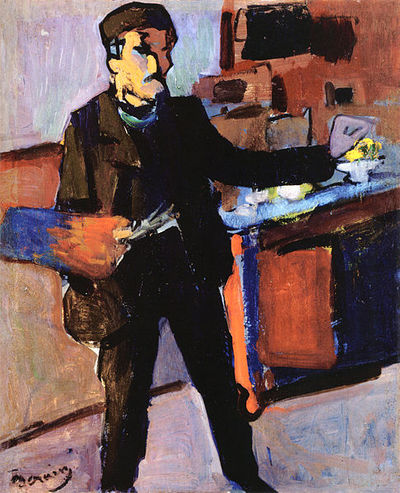
Modern Art Until Second World War
The beginning of modern art is traditionally dated to the second half of the 19th century although elements of modern painting can be seen in earlier works. The art movement was influenced greatly by earlier movements including Romantics, Impressionism and especially post-Impressionism and Symbolism which emerged in the late 19th century and sought to depict visual world with more realism.
The last decade of the 19th century and the first decade of the 20th century saw the rise of modern art movements which were later joined by new ones. Modern art until Second World War thus encompasses:
Fauvism. Also known as style of les Fauves emerged in the early 20th century and put an emphasis on colour and the so-called painterly qualities in contrast to realism of Impressionists. Fauvism as an art movement lasted only a few years but it continued as an art style. The most notable Fauves artists include Henry Matisse, Andre Derain, Henry Rousseau, Charles Camoin and Kees van Dongen.
Expressionism. This movement developed in the early 20th century Germany concurrently with the expressionist movement in literature. It departed from representation of the visual world and sought to express the reality through experience and emotions. Some of the leading expressionist artists include Egon Schiele, Oskar Kokoschka, August Macke, Ernst Ludwig Kirchner, Edvard Munch, Wassily Kandinsky and Franz Marc, to mention only a few.
Cubism. The avant-garde art movement that revolutionised the 20th century painting and sculpture was pioneered by Pablo Picasso and George Braque. The greatest masterpieces were created in the period until the outbreak of the First World War. The movement continued in the 1920s but it eventually gave way to Surrealism.
Dada. This movement developed as a response to the horrors of the First World War and besides visual arts also influenced literature, theatre and graphic design. Besides containing anti-war elements, many Dada works also held political messages, mainly those of the radical left. Some of the leading artists of the Dada movement include Marcel Duchamp, Hugo Ball, Tristan Tzara, Emmy Hennings and Raoul Hausmann.
Surrealism. This art movement developed in the early 1920s from Dada. Just like the latter, Surrealism was a reaction against rationalism that led to the First World War but it was primarily focused on joining conscious and unconscious realms into a new perception of reality or surreality. Key figures of Surrealism include May Ernst, Joan Miro, Salvador Dali, Kansuke Yamamoto and Giorgio de Chirico, to mention only a few.
Futurism. This art movement emerged in the early 20th century Italy and remained limited mostly to the Italian peninsula although concurrent futurist movements also developed in England, Russia and other countries, however, mainly as a cultural and social movement. Some of the most notable futurist artists include Giacomo Balla, Gino Severini and Umberto Boccioni.